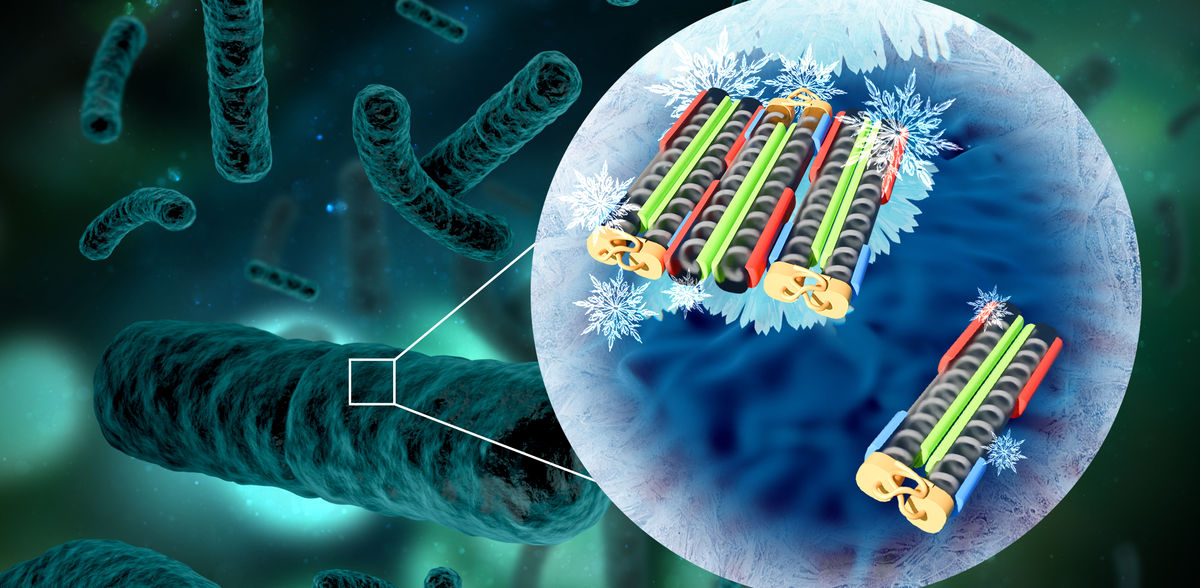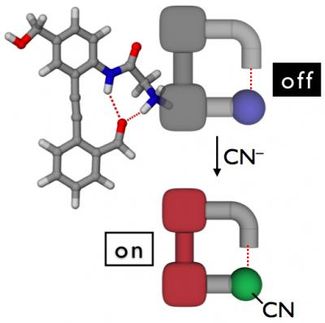The mechanism behind ice-forming bacteria
Researchers unlock mechanism of ice-nucleating bacteria
Advertisement
Particular „Ice-nucleating proteins“ produced by certain bacteria have the ability to control the freezing point of water – so efficiently that no other known material can compete. An interdisciplinary team led by Konrad Meister from the Max Planck Institute for Polymer Research has now uncovered how these proteins operate and how their activity can be precisely regulated. Their findings show that just a handful of assembled proteins is sufficient to achieve maximum activity—and that these proteins preferentially assemble under specifically induced conditions.
The freezing of water requires more than just temperatures below 0°C; it also necessitates an initial ice nucleus to trigger crystallization. Without this crucial nucleus, water can remain liquid through a phenomenon known as supercooling, even down to a frigid -40°C. Nature has evolved intriguing mechanisms to avoid supercooling by promoting the formation of ice nuclei, particularly in certain types of bacteria. These microorganisms utilizes specialized ice-nucleating proteins (INPs) located on their outer membrane to mimic water molecules into ice-like structures. But in order to serve as effective templates for ice crystals, several INPs need to assemble into aggregates. Experimental observations suggest that only two sizes of aggregates exist, with the larger of these highly ordered structures allowing water to freeze at temperatures close to 0°C.
However, it was unclear how many proteins are needed for these aggregates and how they actually assemble. Researchers led by Konrad Meister, group leader at the Max Planck Institute for Polymer Research and professor at Boise State University (USA), have now tackled these questions through an interdisciplinary approach. They closely examined the activity of bacteria from the species Pseudomonas syringae as they were cooled down to -30°C and found that there are more than the two originally suspected classes of aggregates.
Since the exact INP structure remains experimentally undetermined, state-of-the-art structural predictions were utilized to model the protein structure. The research team led by Valeria Molinero at the University of Utah, used this as a foundation for cutting-edge computational methods to determine the critical aggregate sizes required for the observed freezing activity, providing insights into the relationship between protein structure and function.
The research revealed that highly stable dimers, consisting of two proteins, form initially. These dimers then act as building blocks, assembling into larger structures through electrostatic interactions. Remarkably, the study found that aggregates composed of only six proteins are sufficient to initiate the freezing process with exceptional efficiency.
The interdisciplinary researcher team further found a way to promote the formation of larger aggregates by stabilizing the pH and adding simple salts. This knowledge is highly relevant for applications, such as the already-established production of artificial snow. “For the first time, we were able to enhance the activity of bacterial ice nucleators and improve their stability against fluctuating environmental conditions,” says Galit Renzer, main author of the study. “This not only opens up new opportunities for innovative applications such as cryopreservation but also provides valuable insights into dealing with the impacts of climate change.”

























































